Fix: Windows Updates failed Error 0X80242FFF
Some Windows 10 users are encountering the 0x80242fff when they attempt to install a pending Windows Update on their computer. Most commonly this particular error code is reported to occur with the KB3069068 update.
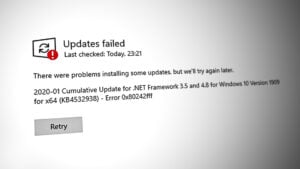
After investigating this particular issue, it turns out that there are several different underlying potential culprits that might be responsible for the apparition of this error code. Here’s a list of scenarios that might trigger the 0x80242fff error:
- Generic glitch with Windows Update – As it turns out, there are generic glitches that could affect the update function on Windows 10 (under different circumstances). The vast majority of these possible occurrences are covered by a repair strategy present inside the Windows Update Troubleshooter. If this scenario is applicable, you should be able to fix the problem by running the Windows Update Troubleshooter and applying the recommended fix.
- Windows Update component is stuck in a ‘limbo’ state – Another reason why you might expect to see this issue is a sub-component of Windows Update that is currently stuck in a limbo state (it’s neither opened nor closed). In this case, you should be able to resolve the issue by running the automated WU agent or by manually resetting every WU dependency.
- Windows Update function is not working – There are also situations where the issue might be related to a roadblock imposed at as system level that is preventing your OS from installing pending updates automatically. In this case, you should be able to bypass the apparition of the error by using the Microsoft Update Catalog to install the pending updates manually.
- Underlying system file corruption – Under certain circumstances, you should be aware that you can encounter this issue due to some kind of system file corruption that is affecting the Windows Update component. In this case, you should be able to resolve the issue by going with an in-place repair or clean install procedure.
Now that you are familiar with every potential fix that might be responsible for this issue, here’s a list of verified methods that other affected users have successfully used to resolve the error and install the pending updates without the same 0x80242fff:
Method 1: Running the Windows Update Troubleshooter
Before we explore other advanced repair strategies capable of resolving the 0x80242fff, let’s see if your Windows is not capable of resolving the issue automatically. Windows 10 is notoriously known for including a lot of built-in repair strategies capable of resolving the majority of issues related to the WU component.
Several users that we’re facing this exact issue have managed to resolve the 0x80242fff by running the Windows Update troubleshooter and applying the recommended fix.
The Windows Update Troubleshooter contains dozens of repair strategies that will be applied automatically if a viable inconsistency is found. If the scan finds a viable repair strategy, it will automatically recommend a viable fix that you can apply with a simple click.
Here’s a quick guide on running the Windows Update troubleshooter to resolve the 0x80242fff error code on Windows:
- Start by pressing a Run dialog box by pressing Windows key + R. Next, type “ms-settings-troubleshoot” and press Enter to open up the Troubleshooting tab of the Settings app.
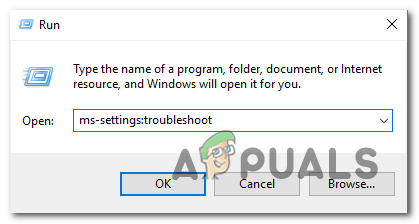
Opening the Troubleshooting tab - Inside the Troubleshooting tab, move over to the right section of the Settings screen and scroll down to the Get up and running section. Inside, click on Windows Update, then click on Run the troubleshooter from the newly appeared context menu.
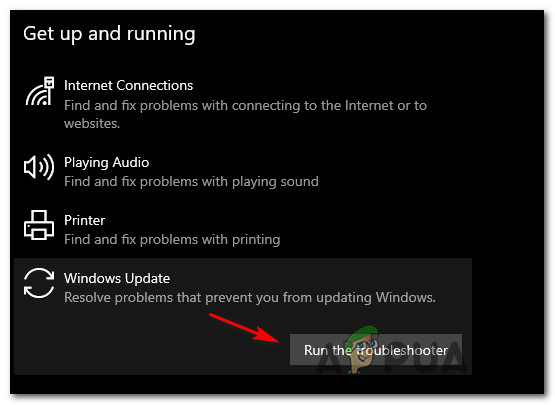
Running the Windows Update Troubleshooter - After you start the Windows Update Troubleshooter, it will automatically begin to scan your system of any inconsistencies. Wait patiently until the initial scan is complete.
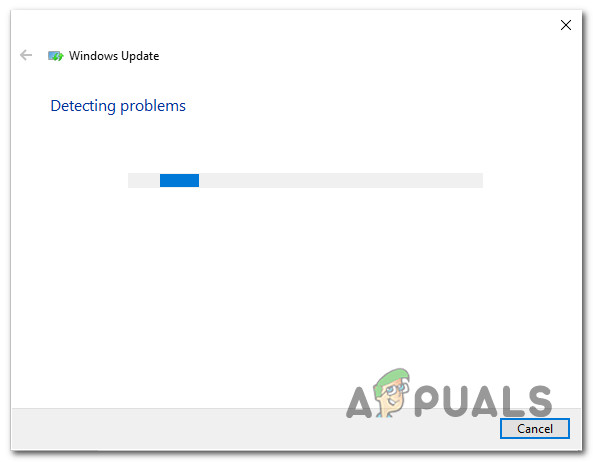
Detecting problem with Windows Update Note: The purpose of this is to determine whether any of the repair strategies included with it are a match for the particular issue that you’re having.
- If a viable repair strategy is identified, you’ll be presented with a new window in which you can click on Apply this fix to apply the recommended repair strategy.
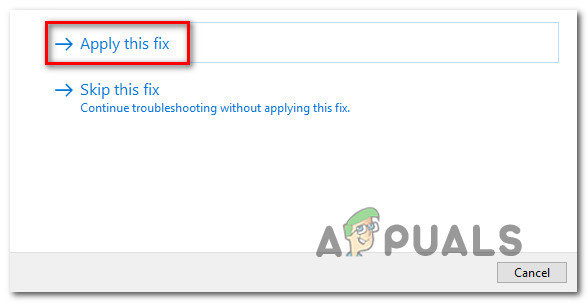
Applying the recommended fix Note: Depending on the type of fix, you might need to follow the on-screen instructions to enforce the recommended fix.
- After the fix is successfully applied, restart your computer and see if the issue is resolved once the next startup is complete.
If the Windows Update Error 0x80242fff is still occurring (or the troubleshooter didn’t find a viable repair strategy), move down to the next potential fix below.
Method 2: Restarting every Windows Update component
If Windows Update didn’t find a viable repair strategy, chances are you’re likely dealing with a glitch that is affecting your OS’s ability to complete the installation of new Windows updates.
In situations like this, you should deploy a series of repair strategies in order to reset every Windows Update component that might be causing issues with your pending Windows updates.
Most likely, this type of issue occurs because of one or more WU (Windows Update) components that are currently stuck in a limbo state (they’re neither open nor closed). If this scenario is applicable, you will be able to fix the problem by resetting all WU components that are involved in the updating process.
Here are two different methods that you can follow in order to reset all Windows Update components. Follow whichever one you feel more comfortable with:
A. Resetting WU via the WU Agent
- Open our browser and visit this Microsoft Technet download page to download the Reset Windows Update Agent script.
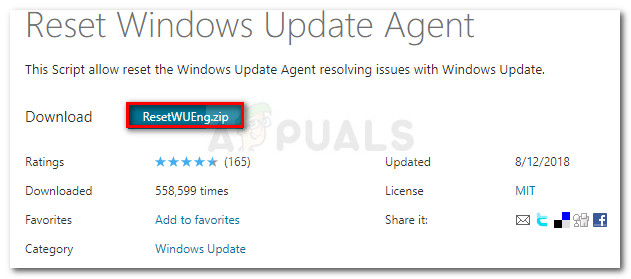
Downloading the Windows Reset agent - Once the download is finally complete, extract the zip archive with a utility like WinRar, WinZip, or 7Zip and paste it into an easy to access location.
- Next, double-click on the ResetWUENG.exe file, click Yes at the User Account Control.
- From the next screen, follow the instructions to run the script on your computer. Once the operation is complete, this fix will reset all your WU components.
- Finally, restart your computer and see if you’re able to install the failing update once the next startup sequence is complete.
B. Resetting WU via elevated CMD
- Press Windows key + R on your keyboard to open up a Run dialog box. Then, type “cmd” inside the text box and press Ctrl + Shift + Enter to open up an elevated Command Prompt.
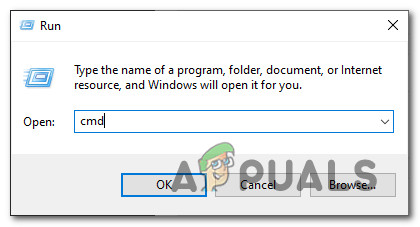
Opening a CMD prompt Note: At the UAC (User Account Control) prompt, click Yes to grant administrative privileges.
- Inside the elevated Command Prompt, type the following commands in order and press Enter after each one to stop all WU related services:
net stop wuauserv net stop cryptSvc net stop bits net stop msiserver
Note: Just so you know what you’re actually instructing the terminal to do, these commands will stop the Windows Update Services, MSI Installer, Cryptographic services, and BITS services.
- After every relevant service has been stopped, run the following commands to clear and rename SoftwareDistribution and Catroot2 folders:
ren C:\Windows\SoftwareDistribution SoftwareDistribution.old ren C:\Windows\System32\catroot2 Catroot2.old
Note: These two folders are holding updated files use by the WU component. Renaming these folders will force your OS to create new healthy equivalents that will not be affected by corruption.
- Now that the folders have been cleared, run the following commands to re-enable the services that we’re previously disabled:
net start wuauserv net start cryptSvc net start bits net start msiserver
- Restart your computer once again and see if the issue has been resolved at the next computer startup.
If the same issue is still occurring even after you have successfully refreshed every Windows Update component, move down to the next potential fix below.
Method 3: Install the failing Update Manually
In case the two methods above didn’t allow you to identify any underlying issues with the Windows Update component, one quick fix that that should allow you to bypass the 0x80242fff error is to use the Windows Update Catalog to find the update that is failing to install and install them manually (most commonly KB3069068).
This operation was confirmed to work by a lot of affected users – This process might be a little tedious (especially if you’re dealing with multiple updates that are all failing with the same error), but it’s worth it if you want to avoid relying on the built-in Windows Update component.
If you decide to go through with this fix, follow the step by step instructions below:
- Open your browser and access the root address of the Microsoft Update Catalog.
- Once you are inside, use the search function in the top-left corner of the screen to search for the update that is failing with the 0x80242fff. (most commonly update KB3069068)
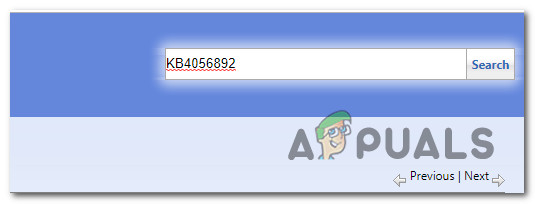
Searching for the update to install manually - Once the results are successfully generated, go ahead and look for the appropriate update while keeping in mind your current OS architecture and the Windows version that you’re using.
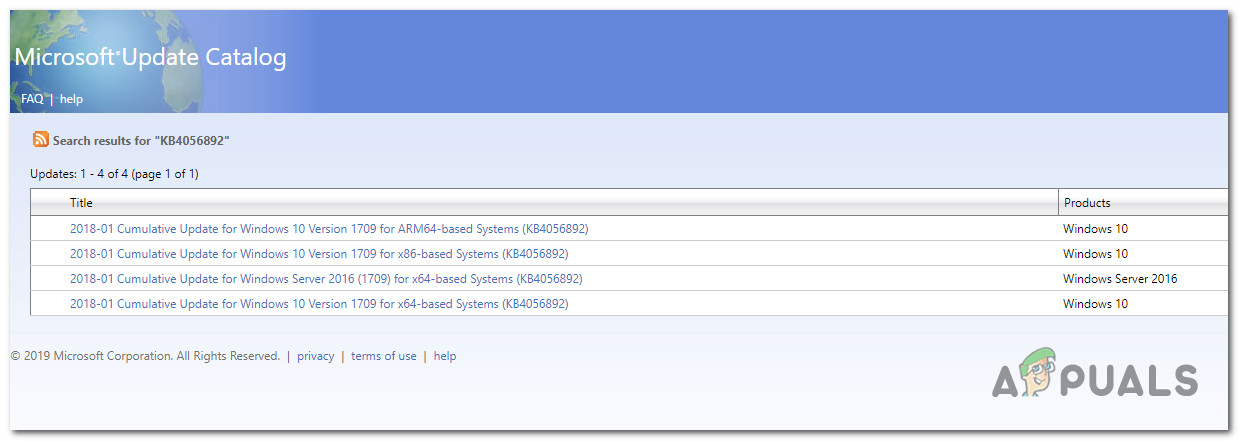
Searching for the right Windows Update - After you managed to locate the correct update, go ahead and click on the Download button associated with the correct driver.
- Next, open File Explorer and navigate manually to the location where the driver was downloaded. When you get to the location where you downloaded the driver that was previously failing, right-click on the .inf file and choose Install from the newly appeared context menu.
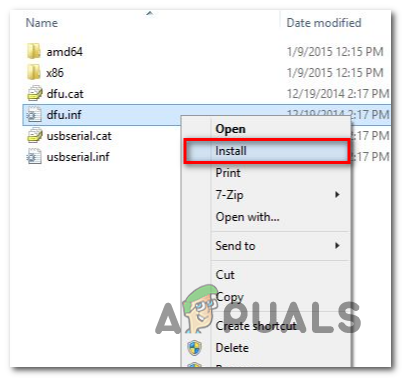
Installing the INF driver Note: If multiple updates are failing with the same error code, repeat steps 3 to 5 with every Windows Update that was previously failing when you attempted to install it conventionally.
In case the same problem is still occurring when you try to install the updates via the Windows Update catalog, move down to the next potential fix below.
Method 4: Refresh every Windows Component
If none of the other fixes above have allowed you to resolve the 0x80242fff, there’s a big chance that you’re actually dealing with some kind of system file corruption that cannot be resolved conventionally.
In this case, your best hope at fixing the issue conventionally is to reset every WIndows component with a procedure like a clean install or install repair (in-place repair).
The easiest procedure out of the bunch is clean installation. But keep in mind that unless you’ll back up your data in advance, you can expect to lose all your personal data present on your OS driver – The major advantage of this method is that you will not be required to use compatible installation media.
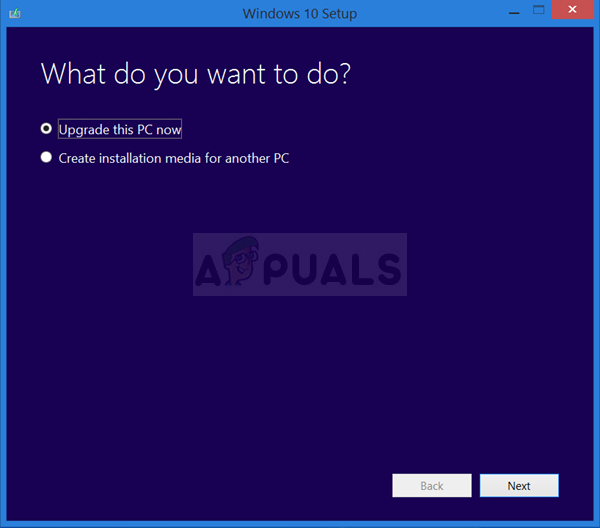
However, if you’re looking for the focused approach, you’ll need compatible installation media to initiate a repair install (in-place repair procedure).
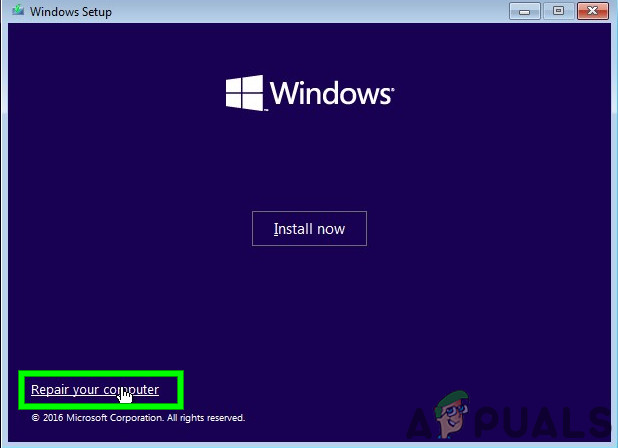
As opposed to clean installing, this operation is considerably more tedious, but the main advantage is that you’ll be able to refresh every potentially corrupted component without losing data from your apps, games, documents, and personal media that’ currently stored on your OS drive.





